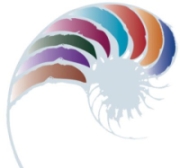<- Homepage: Sustainable Seas Kohunga Kūtai field trip

This online field trip supports a STEM-based, cross curricular approach to teaching and learning. Participation encourages curiosity, citizen-science and student inquiry.
New Zealand Curriculum (NZC)
Students will be encouraged to value:
- innovation, inquiry, and curiosity, by thinking critically, creatively, and reflectively
- diversity, as found in our different cultures, languages, and heritages
- community and participation for the common good
- ecological sustainability, which includes care for the environment.
Students will be challenged and supported to develop key competencies in the context of this field trip:
- Thinking
Make sense of information, experiences and ideas in this field trip. Seek, use and create new knowledge. - Using language, symbols and texts
Make meaning of a range of field trip content and other related information. Provide information and communicate ideas to others. - Managing self
Individually or with others: establish goals, make and work to a plan, create and present ideas, and/or take action. - Relating to others
Connect with a range of stakeholders and experts. Recognise different points of view and collaborate with people. - Participating and contributing
Explain, display and/or present to people beyond the classroom. Make connections with others to take action on a field trip related challenge/opportunity, with and for the local community.
NZC learning areas
This field trip supports, but is not limited to, learning in the following areas:
Science
The Nature of Science
- Participating and contributing
Levels 1-2: Explore and act on issues and questions that link their science learning to their daily living.
Level 3-4: Use their growing science knowledge when considering issues of concern to them. - Understanding about science
Levels 1-2: Appreciate that scientists ask questions about our world that lead to investigations and that open-mindedness is important because there may be more than one explanation.
Level 3-4: Identify ways in which scientists work together and provide evidence to support their ideas. - Communicating in science
Level 3-4: Begin to use a range of scientific symbols, conventions and vocabulary.
Planet Earth and Beyond
- Earth systems
Level 2-5: Explore and describe natural features and resources - Interacting systems
Level 2-5: Describe how natural features are changed and resources affected by natural events and human actions.
Physical World
- Physical inquiry and physics concepts
Level 2-5: Explore everyday examples of physical phenomena, such as movement, forces, electricity and magnetism, light, sound, waves, and heat. Seek and describe simple patterns in physical phenomena
Living World
- Ecology
Level 2-5: Explain how living things are suited to their particular habitat and how they respond to environmental changes.
Social Science
- Place and Environment
Level 2: Understand how places influence people and people influence places
Level 3: Understand how people view and use places differently
Level 5: Understand how people's management of resources impacts on environmental and social sustainability
Technology
- Technological Products
Level 1-3: Understand the relationship between the materials used and their performance properties in technological products. - Nature of Technology
Level 4: Understand how technological development expands human possibilities and how technology draws on knowledge from a wide range of disciplines.
English
The selected processes and strategies indicators used in the table below are from Level three of the NZC, but aim to cover indicators from levels two to four.
- Listening, Reading and Viewing
Selects and reads for enjoyment and personal fulfilment
Recognises connections between oral, written, and visual language
Integrates sources of information and prior knowledge confidently to make sense of increasingly varied and complex texts
Thinks critically about texts with increasing understanding and confidence - Speaking, Writing and Presenting
Uses an increasing understanding of the connections between oral, written, and visual language when creating texts
Creates a range of texts by integrating sources of information and processing strategies with increasing confidence
Making use of digital technologies
This field trip utilises a range of digital technologies to connect students to a range of people and places that might otherwise be hard to access. This includes:
- Web conferencing
- 3D images
- Virtual maps
- Video and images
- Online content and narrations
- Social media
Consider how you can integrate digital technologies to remove barriers and enable further learning in this topic. Students can integrate digital technologies in innovative ways to design quality, fit-for-purpose digital solutions to field trip related challenges and opportunities.



